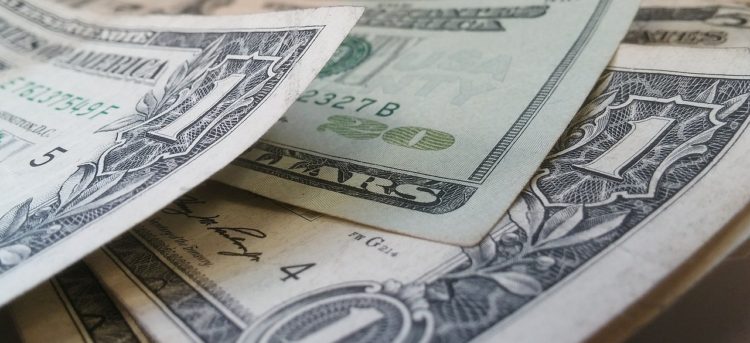I was talking to a friend the other day about Square Capital, which I think is a pretty good deal for Square merchants with 24% APR. My friend, a software engineer from a well known Silicon Valley internet company, couldn’t understand why a 24% APR loan is a good deal. Well, welcome to the world of business financing! Single digit percent interest rates are only available through banks. If you are used to 3% residential mortgage interest rates, the information I am about to show you will be eye opening.
Alternative business loans are really expensive because of a business loan’s cost structure. We can roughly break the costs down into the following 4 parts:
- Lenders’ borrowing cost: Investors who invest in alternative business loans demand annualized net returns in the 10-12% range since these loans are perceived to be more risky, since they are usually under-collateralized and haven’t had a long track record to price their risk accurately.
- Provisioned Loan Loss: Lenders estimate their principal loss based on historical data. The estimated loss can be anywhere between 1-10% depending on the risk they are taking.
- Borrower Acquisition Cost: Lenders need to spend on marketing to acquire a borrower. For example, they pay loan brokers 1-13% to acquire a customer. Check out this page and this article to get a sense of how much a loan broker can make.
- Lenders’ Expenses and Profits: Finally, lenders need to take a cut to cover their operational expenses and make a profit. This can be anywhere between 1-5% depending on the volume of loans they underwrite.
Let’s take an example of a $50K 6-month business loan and analyze its cost. Let’s also assume that this lender doesn’t make any money.
| %age | Cost | |
|---|---|---|
| Borrowing Cost | Based on a 6-month 11% loan | $1616.36 |
| Provisioned Loss | 5% | $2500 |
| Borrower Acquisition | 5% | $2500 |
| Lender Keeps | 0% | $0 |
| Total | – | $6,616.36 |
As you can see, before the lender makes any money, it has already spent $6,616.36, 13% of the $50K borrowed, or an equivalent of 43.75% APR!!! If the lender is set to make 3% of the principal amount, the APR becomes 62.32%, which is inline with the APR we observed from the short term loan lenders. They are very expensive not because the lenders make a lot of money but because the cost structure is really broken.
So how do business owners get a more reasonable loan offer? I think there are 3 key aspects to a cheaper business loan:
- Longer repayment period: Instead of a 6-month loan, make it 3 years. This way the customer acquisition cost can be amortized for a longer period of time.
- Lower borrower acquisition cost: the savings can be passed to borrower directly.
- Individualized risk pricing: This is a very involved point. Instead of paying the investors 10-12% from a pool of loans with varying credit quality, make it a marketplace. Investors with low risk tolerance get a lower net yield with extremely high quality borrowers, while investors with high risk tolerance get a higher net yield with more risky borrowers. Let the investors pick and choose the loans they want to invest and lenders will pass the risk to them.
Fortunately, in the past couple of years, we have seen some new lenders doing exactly what is mentioned above. Companies like LendingClub, Dealstruck, Fundation and FundingCircle offer 2-5 year loans with the marketplace approach. They also only pay the brokers and referrers 1% of the loan amount. They are able to push the APR to less than 20% for profitable business with good credit. These are great alternatives qualifying business owners should consider.
In addition, Amazon Lending and Square offer their merchants business loans with really reasonable interest rates. They are able to do it because they have proven revenue numbers from the merchants and they have zero borrower acquisition costs. If you sell with these platforms, they are great alternatives too.
Finally, let’s talk about bank loans. Banks’ borrowing costs are really low. (~0.4%, which is why your savings account only makes 0.X%). Banks have very, very low risk tolerance. They don’t want any defaults. Their cost is primarily borrower acquisition (through their fancy branches) and their operating expenses. They can offer 5-7% interest rate plus origination fee. You can try talking to a couple of banks and see if you may reach their very high bar. If not, your next best interest rates will be most likely around 15% or higher.
As marketplace lenders evolve, hopefully they can price the risk more accurately and lower the costs further for really high quality borrowers, while providing capital access to less well-off businesses.
This article was originally written on July 31, 2014 and updated on August 25, 2016.


Have at it! We'd love to hear from you and encourage a lively discussion among our users. Please help us keep our site clean and protect yourself. Refrain from posting overtly promotional content, and avoid disclosing personal information such as bank account or phone numbers.
Reviews Disclosure: The responses below are not provided or commissioned by the credit card, financing and service companies that appear on this site. Responses have not been reviewed, approved or otherwise endorsed by the credit card, financing and service companies and it is not their responsibility to ensure all posts and/or questions are answered.